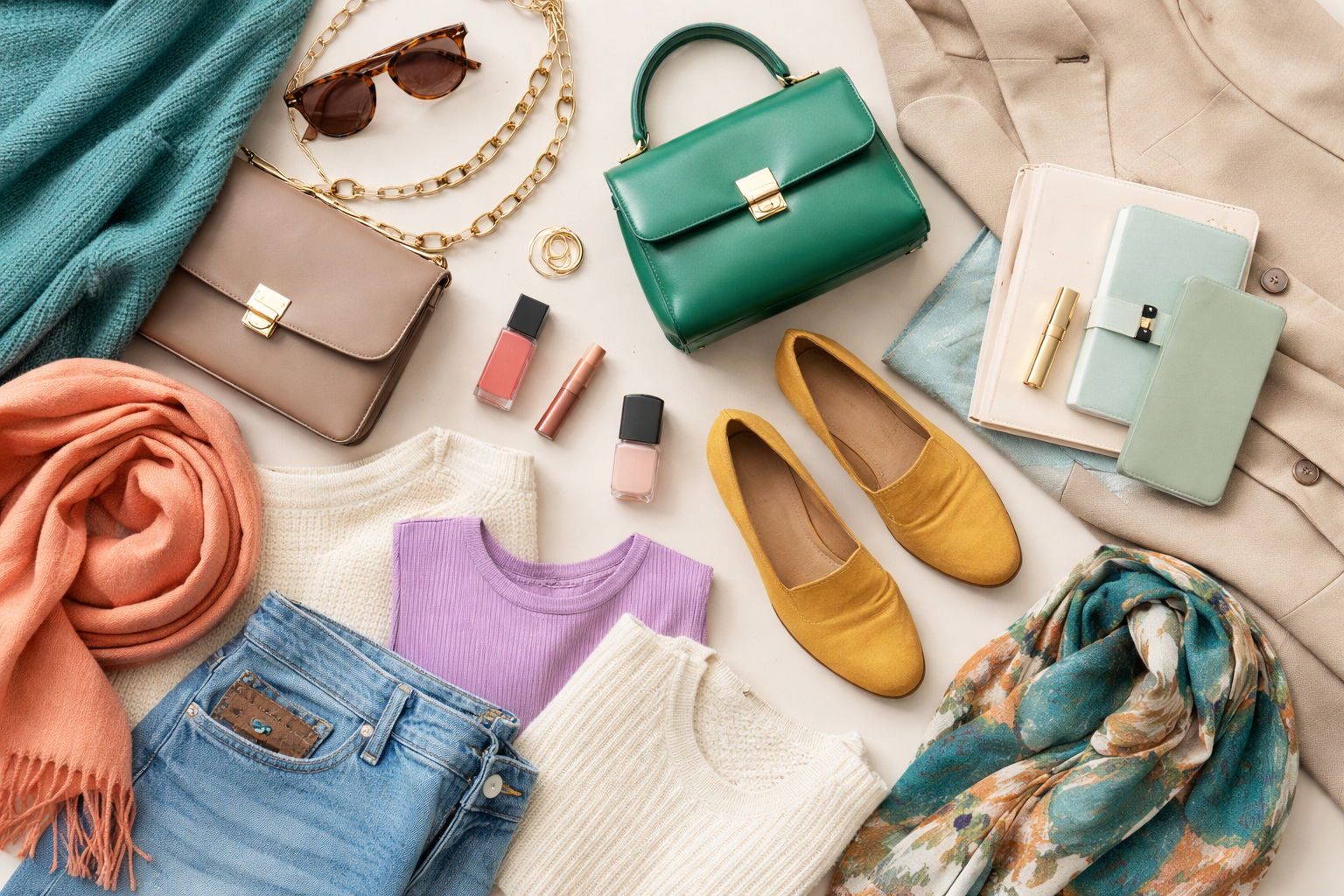
Hey, eco-warriors and fashionistas! 🌿✨
Have you ever thought about the environmental footprint of your favorite T-shirt or those comfy jeans? It’s time to pull back the curtain on the fabrics that make up our wardrobes and see which ones are doing the planet a solid and which ones are, well, not-so-great. So grab your favorite eco-friendly drink and settle in – let’s get sustainable!
Cotton: The Good, The Bad, and The Thirsty
Conventional Cotton: The Thirsty Culprit
We all love cotton for its breathability and comfort, but did you know conventional cotton is a major water guzzler? To produce just one kilogram of cotton (enough for a T-shirt and a pair of jeans), it takes about 2,700 liters of water. That’s almost enough to fill up a small swimming pool! 😱
Organic Cotton: The Thirst-Quenching Hero
But here’s a fun fact to brighten your day: Did you know that organic cotton uses 91% less water than conventional cotton? That’s right, folks! By switching to organic cotton, you can help save our precious water resources. Organic cotton is grown without synthetic pesticides or fertilizers, which means it's kinder to the soil and the farmers who grow it. Plus, it still gives you all the comfort and breathability you love.
The Lowdown
- Conventional Cotton: High water usage, heavy on chemicals.
- Organic Cotton: Low water usage, eco-friendly, and safer for farmers.
Polyester: The Double-Edged Sword
The Pros
Polyester is the world’s most commonly used fiber, and for good reason. It’s durable, lightweight, and wrinkle-resistant. Plus, it dries quickly – perfect for those on-the-go days when you spill your coffee (again). 🏃♀️
The Cons
But here’s the catch: polyester is made from petroleum, a non-renewable resource. Its production process is energy-intensive, and it sheds microplastics every time you wash it. These tiny plastic particles end up in our waterways, contributing to ocean pollution and harming marine life. 🐠🚫
The Verdict
- Polyester: Durable and convenient but energy-intensive and a source of microplastic pollution.
Wool: Nature’s Insulator
The Woolly Wonder
Wool is a fantastic natural fiber that keeps you warm in winter and cool in summer. It’s renewable, biodegradable, and durable – a true triple threat! 🧶🌍
The Environmental Impact
However, the environmental impact of wool can vary. Sheep farming requires significant land and water, and if not managed properly, can lead to overgrazing and soil erosion. Additionally, methane emissions from sheep are a concern, contributing to greenhouse gases.
The Wool Scorecard
- Wool: Renewable and biodegradable but can have high land and water use, and methane emissions are a downside.
Rayon/Viscose: The Semi-Synthetic Option
The Basics
Rayon, also known as viscose, is made from wood pulp. It’s often touted as a more eco-friendly option because it’s derived from natural sources. It’s soft, breathable, and drapes beautifully – what’s not to love? 🌳👗
The Process
The production process, however, is less than idyllic. Converting wood pulp into fabric involves a lot of chemicals, some of which are harmful to workers and the environment. Moreover, the sourcing of wood can lead to deforestation if not done sustainably.
The Bottom Line
- Rayon/Viscose: Soft and breathable but can involve harmful chemicals and contribute to deforestation.
Linen: The Ancient Eco-Chic Choice
The Linen Lowdown
Linen, made from flax plants, is one of the oldest and most eco-friendly fabrics around. It’s incredibly durable, gets softer with each wash, and is biodegradable. Plus, flax plants require far less water and pesticides than cotton. 🌾💧
The Cons
The only downside? Linen can be a bit pricier and wrinkles easily. But hey, a few wrinkles are a small price to pay for sustainability, right?
The Linen Love
- Linen: Low water use, biodegradable, durable, but wrinkles easily.
Bamboo: The Green Giant?
Bamboo Basics
Bamboo has been hailed as an eco-friendly superstar. It grows super fast, doesn’t need pesticides, and uses less water than cotton. Sounds perfect, right? 🌱🚀
The Process Problem
The catch lies in the processing. Turning bamboo into a soft, silky fabric involves a lot of chemicals. There are more sustainable methods, like mechanical processing (think of how linen is made), but these are less common and more expensive.
The Green Check
- Bamboo: Grows fast and uses less water but processing can be chemically intensive unless mechanically processed.
The Sustainable Future of Fashion
Recycled Fabrics: The Upcycled Revolution
One way to make a huge impact is by opting for recycled fabrics. Recycled polyester, made from PET bottles, significantly reduces the need for virgin petroleum and diverts plastic waste from landfills and oceans. Likewise, upcycled fabrics made from textile waste help cut down on the massive amounts of waste generated by the fashion industry. ♻️🌊
Hemp: The Overlooked Champion
Hemp is another fantastic option. It grows quickly, requires little water, and doesn’t need pesticides. It’s incredibly durable and gets softer with each wash. Hemp is a true eco-champion that deserves more love in our wardrobes. 🌿💪
The Circular Economy
The future of fashion lies in a circular economy where products are designed to be reused, repaired, and recycled. This reduces waste and minimizes the environmental footprint of our clothes. Brands embracing this model are leading the way towards a more sustainable future.
Your Role in Sustainable Fashion
As a savvy shopper, you can make a difference by:
- Choosing Sustainable Fabrics: Opt for organic cotton, linen, hemp, and recycled materials.
- Supporting Eco-Friendly Brands: Support brands that prioritize sustainability and ethical practices.
- Reducing Fast Fashion: Buy less, choose well, and make it last. Quality over quantity, always.
- Recycling and Donating: Recycle your old clothes and donate items in good condition to extend their life cycle.
Wrap Up: Wear the Change
Fashion is all about self-expression, and what better way to express yourself than by wearing your values on your sleeve – literally! By understanding the environmental impact of different fabrics and making more sustainable choices, you can help create a cleaner, greener planet. So next time you shop, think about the story behind the fabric. Is it kind to the Earth? Does it make you feel good inside and out? If the answer is yes, then rock that outfit with pride! 🌟🌍
Stay stylish, stay sustainable, and remember – every little change counts. Together, we can weave a better future for fashion and our planet. 💚👗


.svg)



